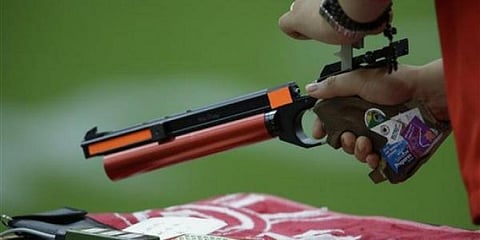

NEW DELHI: The ISSF World Cup concluded on Sunday at the Dr Karni Singh Shooting Range here with India finishing atop the medal standings with a whopping 15 gold medals.
The next best was Team USA with four gold. However, if one looks closely at the medals claimed by the hosts, the newly introduced team events played a huge part.
Among Olympic disciplines, the host nation claimed five yellow metals. The first arrived courtesy Yashaswini Singh Deswal in 10m air pistol, another came in 10m air rifle mixed team through the pair of Divyansh Singh Panwar and Elavenil Valarivan, Manu Bhaker and Saurabh Chaudhary combined to win the third in 10m mixed air pistol, Aishwary Pratap Singh Tomar in excelled in 50m rifle three positions while Chinki Yadav clinched the 25m pistol women event.
The rest of the ten pole positions came as the ISSF trialed out new team events. Each event had additional men's and women's team events while a few had additional mixed sections.
Sunday's two gold medals arrived in the trap men's and women's team events as the trio of Shreyasi Singh, Manisha Keer, Rajeshwari Kumari and Lakshay Sheoran, Prithviraj Tondaiman, Kynan Chenai secured top spot.
Another silver was added in the men's 25m rapid fire pistol team competition courtesy Gurpreet Singh, Vijayveer Sidhu and Adarsh Singh.
The newly introduced events had its share of pros and cons. One of its biggest advantages was for Indian shooters who were competing on the international stage after a gap of more than a year.
In some cases, shooters who could not perform as well as they would have liked in individual events managed to win a medal at the end of the day.
A case in point being Sanjeev Rajput who could not medal in his individual event but garnered gold in the mixed along with fellow veteran exponent of the three-position Tejaswini Sawant.
"The pressure of being in a final is the same, whether it be individual or team. We managed to get more competitive action under our belts which is a huge bonus considering the unclear path forward due to tournaments getting postponed," Rajput explained.
Quite a few shooters got the chance to take part in multiple events which helped them get back that feeling of dealing with high-pressure situations.
The other positive was quite a few young shooters got the chance to compete in a World Cup and quite a few medalled in their debut tournament. Young Vijayveer, who clinched silver in the men's rapid-fire 25m event, also clinched a gold in the mixed event.
While a few exceptional performances were put in by Indian shooters, the newly introduced events skewed the medal picture in favour of the hosts.
Quite a few events had very few participants other than the host nation. In the mixed 25m pistol as well as the women's team trap, only two teams were in the fray. In some cases, both teams were from India!
The NRAI and the organising committee had a discussion with the ISSF and in events where there were very few teams had even asked if those could be omitted.
"We told ISSF that there are not many teams in some events. We maybe could have done away with those or we might have refrained from giving away medals," a member of the organising committee revealed.
But the ISSF wants to see if the different formats are working and whether any rejigs are required.
So they are testing it starting from this particular edition and conduct it by following all the protocols like a medal event. The team events are being organised as a trial for the next Olympic cycle.